Previously, in Comics 101: Last time, we introduced you to the beginnings of one of DC Comics’ lesser lights: Terry Sloane, the Man of a Thousand Talents known as Mr. Terrific. With a less than memorable costume and not much in the way of superpowers, why did Mr. Terrific stand the test of time in even the limited aspect in which he did? As with so many things in life, it turns out to be strictly business…
In terms of its publication genealogy, the Justice Society of America was from the start something of an anomaly. You see, although DC Comics and All-American Comics shared distribution and advertising, they were actually two separate companies. Which was why it was all the more surprising that the Justice Society featured heroes from both companies, with the Spectre, Dr. Fate, Sandman and Hourman representing the DC side (along with honorary members Superman and Batman) and Green Lantern, the Flash, Hawkman, the Atom and Johnny Thunder (and later JSA “secretary” Wonder Woman) making up the All-American contingent.
That is, until late 1944, when All-American owner M.C. Gaines decided to strike out on his own, and cut off all relationship ties with DC. Which meant that DC folks like the Spectre, Dr. Fate, Sandman and Starman who had been regularly appearing in the JSA feature in ALL-STAR COMICS had to go. (Superman and Batman, who only appeared very rarely, wouldn’t be missed.) This left four vacancies in the Justice Society roster, as of the spring 1945 issue of ALL-STAR COMICS, entitled “This Is Our Enemy!” Flash and Green Lantern, who had become honorary members of the JSA upon receiving their own solo comic books were immediately returned to the fold. Filling the other two slots were characters from All-American’s SENSATION COMICS, namely Wildcat and Mr. Terrific.
Their arrival in the JSA is fairly matter-of-fact, as the opening panels of ALL-STAR #24 show Wildcat and Mr. Terrific arriving in the JSA meeting-room at the invitation of Hawkman, who’s “called them in to help out on this case.”
It’s an unusual adventure, to say the least, as the JSA attempts to make confused American draftee Dick Amber understand why it’s important to be at war with Germany, and does so with the help of the Spirit of Conscience (who, between you and me, looks an awful lot like the Blue Fairy from Disney’s PINOCCHIO) who will magically transport Dick and a JSA member to various points in Germany’s history, to show him “the truth about Germany.”
In Mr. Terrific’s adventure, he watches over Dick as Dick takes the role of Manfred Von Klug, cousin to Germany’s crown prince Frederick Wilhelm. As Dick lives the life of Von Klug, he begins to see how Germany’s wealth and prosperity comes only through its continual conquest of other nations, and elects to give up his place in Wilhelm’s army. When Wilhelm’s men attempt to arrest Von Klug, Mr. Terrific shows them a little futuristic American muscle:
This would be Mr. Terrific’s only appearance in the JSA’s original Golden Age run. By the end of 1945, M.C. Gaines had sold All-American Comics to DC, so the JSA was free to feature any characters they wanted, and Mr. Terrific never showed up again. But was he even really a member? At the end of ALL-STAR #24, the JSA’s “Proposal for a lasting Peace” is shown, signed by all the members of the Justice Society, and as you can see here, Mr. Terrific’s name is not on the list, despite his smiling appearance at the top of the scroll:
And yet, when tykes in the ’40s sent in their nickels for their “Junior Justice Society of America” mailed in for their decoder badges, whose face appeared on the official JJSA membership certificate? That’s right, smilin’ Terry Sloane’s, as seen here:
Short as Mr. Terrific’s JSA stint was, it didn’t seem to help his solo career too much, either, as it was only two more years when his featured adventures in SENSATION disappeared, with his final appearance coming in issue #63 in March 1947. One might have suspected that to be the end of the road for Terry Sloane, were it not for the Silver Age renaissance of superheroes ushered in by DC in the late 50s and early 60s with the introductions of the new Flash and Green Lantern, and following that, the Justice League of America. After the JSA’s re-introduction in JUSTICE LEAGUE OF AMERICA #21, the JLA/JSA team-ups became an annual event, and in the third such meeting, in JLA #37 (August 1965), who should make his triumphant return but Mr. Terrific, serving alongside his fellow JSAers Flash, Hawkman, Green Lantern, the Atom and Dr. Fate, as they try to solve the mystery of “The Earth Without a Justice League!”
Why did Mr. Terrific get the callback, you have to wonder. Maybe writer Gardner Fox wanted a more grounded human analog to Batman to serve as a parallel — or maybe Fox just remembered him from ALL-STAR #24 and wanted to bring him back. Who knows?
Mr. Terrific doesn’t have a whole lot to do in this adventure, although he does get to show off his acrobatic prowess against a faux gangster Batman:
Mr. Terrific would make his second Silver Age appearance in JLA #55 (August 1967) , in “The Super-Crisis That Struck Earth-Two!”, where he’s in attendance at the meeting which marks a grown-up Robin the Boy Wonder’s induction into the JSA. Again, here Mr. Terrific doesn’t have much to show for, mostly just getting his ass kicked by a neophyte supervillain calling himself the Money Master.
Although he does at least score a victory over a momentarily possessed Hal Jordan, beating him down with a thick branch, of all things:
That’s pretty much it for Mr. Terrific’s JLA appearances (except for a brief appearance in a crowd scene in JLA #82), until his final one in JLA #171 (October 1979), “The Murderer Among Us: Crisis Above Earth-One!”, by writer Gerry Conway and artist Dick Dillin.
Rather than another world-threatening disaster or menace, Conway and Dillin provide an intriguing superhero version of a locked-room whodunit, as the Justice League and Justice Society convene in the JLA Satellite for their annual get-together, for once motivated by camaraderie instead of catastrophe. It’s a rare glimpse at the teams just relaxing and enjoying each other’s company, like this moment when the JSA’s Hawkman congratulates new JLA member Zatanna. Note the appearance of Mr. Terrific at bottom, just before his untimely end.
At the party, Mr. Terrific reveals to the two Flashes why he came out of retirement: the return of an old enemy:
Moreover, this is why Mr. Terrific has returned to the Justice Society, as he’s still on his old enemy’s trail:
Naturally, the JLA and JSA can’t ever get together without something going wrong, and sure enough, there’s suddenly a hull breach aboard the Satellite, leading to the discovery of a casualty: Terry “Mr. Terrific” Sloane.
Even worse, further investigation reveals that Mr. Terrific didn’t die from the explosion; in fact, he was strangled, meaning that someone in the JLA or JSA was the killer.
The whodunit continued in the following issue, with “I Accuse…”, in which Batman and the Huntress, as the teams’ resident detectives, conduct the investigation into Mr. Terrific’s murder. There are a few cheats and flaws in the whodunit’s structure, to be honest, as one of the clues involves evidence found at the scene, a piece of steel with finger indentations, which seems to indicate that the killer had super-strength. However, Batman correctly points the finger of blame at Jay Garrick, the Earth-2 Flash, who has been possessed by Mr. Terrific’s old enemy, the Spirit King.
This despite the fact that neither Flash has ever displayed the ability to bend steel with their bare hands. That’s why they call Batman the world’s greatest detective, I guess. Sometimes, he doesn’t even need to bother with the facts…
As for Mr. Terrific’s enemy, the Spirit King, well, they just made him up for this issue (complete with a rockin’ white man’s afro), which also makes it kind of hard to guess that he was behind it, since no one reading the issue had ever heard of him before.
And in the ultimate cheat, take a look at the cover, where Batman is pointing at the killer and speaking to him directly.
Now look who’s behind him. That’s dirty pool. At least make an effort to play fair, people.
Even with its faults, the story is a compelling one, and so different from all previous JLA/JSA teamups that it really stands out as memorable. The tale ends on an uncharacteristically downbeat note, with the Spirit King getting away and the JSA retreating to their own world, bearing their dead.
It was James Robinson who did more with Terry Sloane’s character in three pages of STARMAN than anyone else did with him in decades, with his poignant monologue from STARMAN #37, about why he became a superhero, and whether it all mattered. Here Terrific talks about why he took up the mystery-man life and what he’s remembered for, and Jack points out why, despite being thought of as a second-stringer, he may be the best of them all:
The “Mr. Terrific” name lived on in his successor Michael Holt, created by John Ostrander and Tom Mandrake in the pages of THE SPECTRE, a genius-level intellect and Olympic athlete who considered suicide following the death of his wife and child, but takes up the role of Mr. Terrific after being inspired by the tale of Terry Sloane’s life, thanks to the intervention of the Spectre.
The new Mr. Terrific became an increasingly important player in the DC universe in the last few years, rising to the rank of chairman of the Justice Society and White King in the espionage organization Checkmate, and widely considered the third-smartest man in the world.
As cool as the new Mr. Terrific is (and he is pretty cool, even scoring a recurring role in the final seasons of JUSTICE LEAGUE UNLIMITED, and appearances on DC’s ARROW), I’ll always have a soft spot in my heart for good old Terry Sloane. Going around with “fair play” on your shirt just feels so quaint and old-fashioned, but it seemed sincere. Talk about wearing your heart on your sleeve.

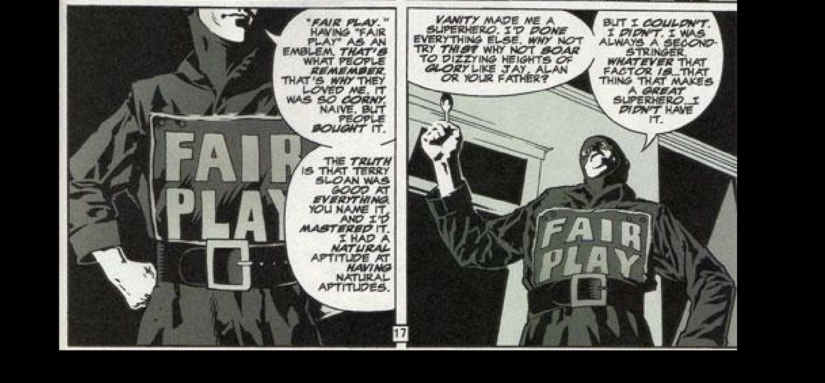



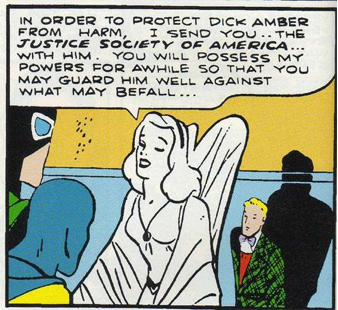
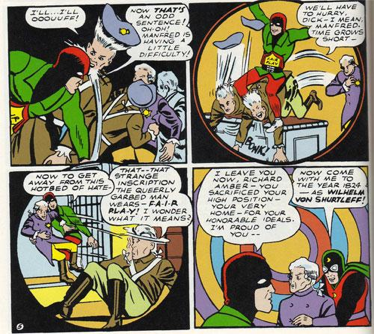


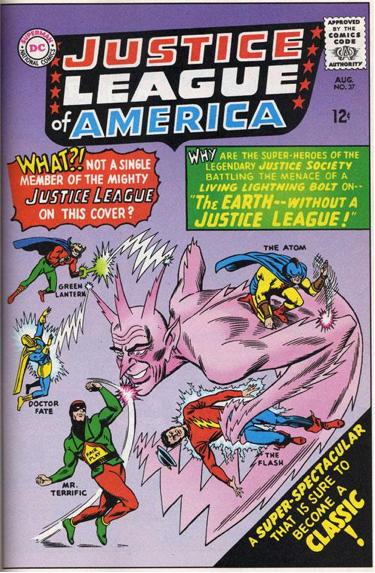
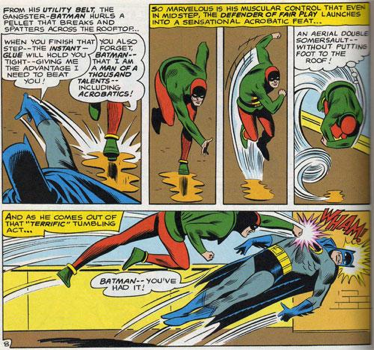




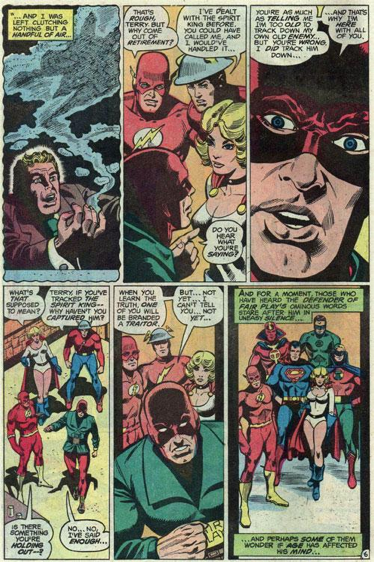

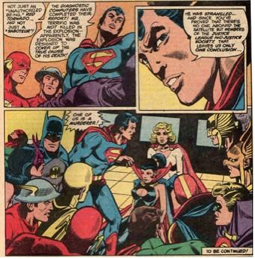
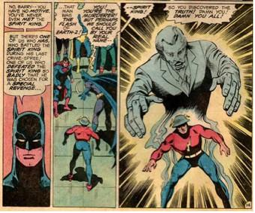
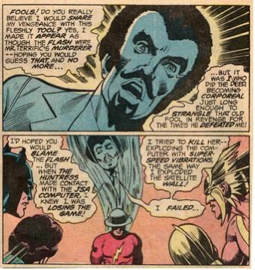
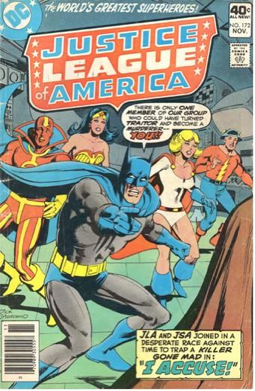



Comments are closed.